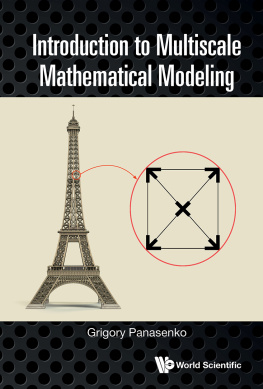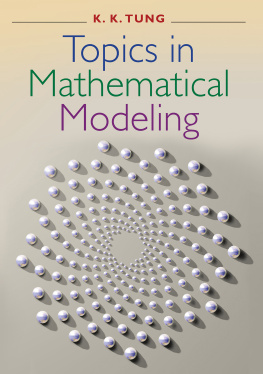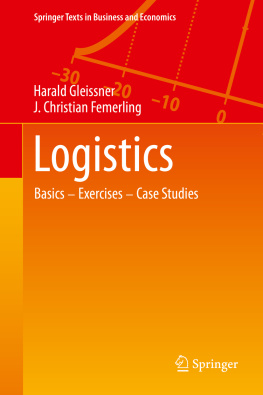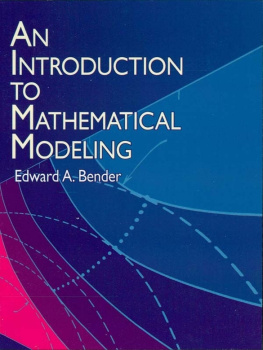Christof Eck Harald Garcke - Mathematical Modeling
Here you can read online Christof Eck Harald Garcke - Mathematical Modeling full text of the book (entire story) in english for free. Download pdf and epub, get meaning, cover and reviews about this ebook. City: Cham, publisher: Springer International Publishing, genre: Children. Description of the work, (preface) as well as reviews are available. Best literature library LitArk.com created for fans of good reading and offers a wide selection of genres:
Romance novel
Science fiction
Adventure
Detective
Science
History
Home and family
Prose
Art
Politics
Computer
Non-fiction
Religion
Business
Children
Humor
Choose a favorite category and find really read worthwhile books. Enjoy immersion in the world of imagination, feel the emotions of the characters or learn something new for yourself, make an fascinating discovery.
- Book:Mathematical Modeling
- Author:
- Publisher:Springer International Publishing
- Genre:
- City:Cham
- Rating:5 / 5
- Favourites:Add to favourites
- Your mark:
- 100
- 1
- 2
- 3
- 4
- 5
Mathematical Modeling: summary, description and annotation
We offer to read an annotation, description, summary or preface (depends on what the author of the book "Mathematical Modeling" wrote himself). If you haven't found the necessary information about the book — write in the comments, we will try to find it.
Mathematical Modeling — read online for free the complete book (whole text) full work
Below is the text of the book, divided by pages. System saving the place of the last page read, allows you to conveniently read the book "Mathematical Modeling" online for free, without having to search again every time where you left off. Put a bookmark, and you can go to the page where you finished reading at any time.
Font size:
Interval:
Bookmark:
- not all the necessary data are known,
- the model thus achieved cannot be solved anymore, meaning that its (numerical) solution is expensive and time consuming, or it is not possible to show the well-posedness of the model.

 one could think about omitting the term
one could think about omitting the term  . However, this would lead to an obviously unsolvable algebraic system of equations
. However, this would lead to an obviously unsolvable algebraic system of equations 
 . Therefore sometimes terms which are identified as small, cannot be neglected. Hence, constructing a good mathematical model also means to take aspects of analysis (well-posedness) and numerics (costs) of the model into account.
. Therefore sometimes terms which are identified as small, cannot be neglected. Hence, constructing a good mathematical model also means to take aspects of analysis (well-posedness) and numerics (costs) of the model into account.- an application problem to be described,
- a number of model assumptions ,
- a mathematical problem formulation, for example in the form of a mathematical relation , specifically an equation, an inequality, or differential equation, or several coupled relations, or an optimization problem.
- the initial number

Font size:
Interval:
Bookmark:
Similar books «Mathematical Modeling»
Look at similar books to Mathematical Modeling. We have selected literature similar in name and meaning in the hope of providing readers with more options to find new, interesting, not yet read works.
Discussion, reviews of the book Mathematical Modeling and just readers' own opinions. Leave your comments, write what you think about the work, its meaning or the main characters. Specify what exactly you liked and what you didn't like, and why you think so.









